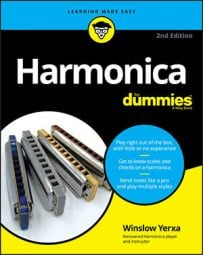Early in the 19th century, builders in Germany and Austria developed the harmonica to play songs and dance tunes popular in the German-speaking parts of Europe. They never dreamed that Americans in the rural South would find ways to make the harmonica slur, cry, and wail with bent notes.
Harmonicas became widely available in North America in the 1870s, and soon harmonica instruction books were being published in Chicago and other northern cities. None of them mentioned bending. By the early 1920s, harmonica players in the South, both black and white, were making records using bent notes with an artistry and technical sophistication that suggests bending had already been around for a long time.
Nobody knows who bent the first note (they forgot to have it bronzed), but the sliding pitches and deliberately lowered "blue notes" of African-American music suggest that note bending on the harmonica was an imitation of these vocal styles. Rural harmonica styles, complete with note bending used to imitate steam trains and fox hunts, came to country music through De Ford Bailey's Grand Ole Opry broadcasts from Nashville in the 1920s and '30s. The sound of bending notes came to urban folk music in New York in the 1940s and '50s through the playing of North Carolina harmonica wizard Sonny Terry and Oklahoma protest singer Woody Guthrie.
When rural harmonica players arrived in cities like Memphis and Chicago, they started adapting their playing to the urban environment. Rural mimicry took a back seat to topics like sex and drugs (rock-and-roll would soon follow). In the early 1960s, urban harmonica artists like Little Walter and Sonny Boy Williamson II visited the British Isles and made a strong impression on British rockers, such as the Rolling Stones and the Beatles. When the British rock invasion reached American shores in 1964, British rockers with harmonicas introduced many young Americans to a sound their parents had either forgotten or never known.
Meanwhile, American folk-influenced artists like Bob Dylan began making hit records with squalling harmonica inspired by Woody Guthrie. In Nashville, country music had become a big business and had lost much of its folksiness, until a young blues-inspired harmonica player named Charlie McCoy reintroduced the sound of bent notes where De Ford Bailey had left off decades earlier. Since then, note bending in rock, country, folk, and blues has become a permanent part of the sound of harmonica playing in popular music worldwide.

